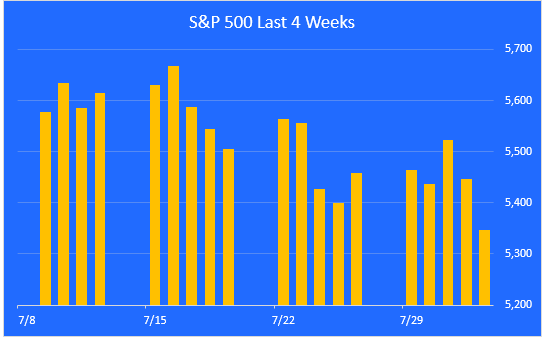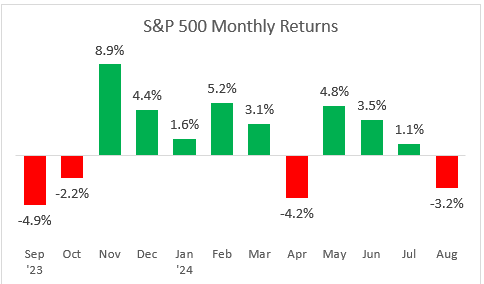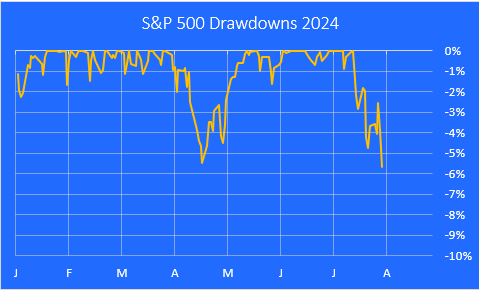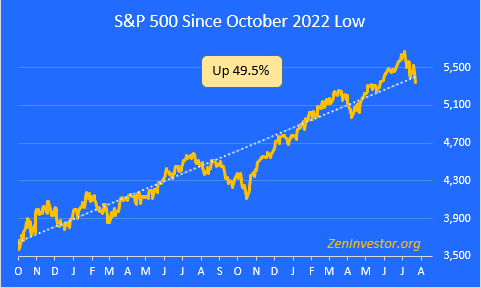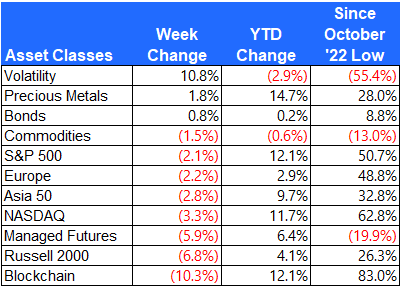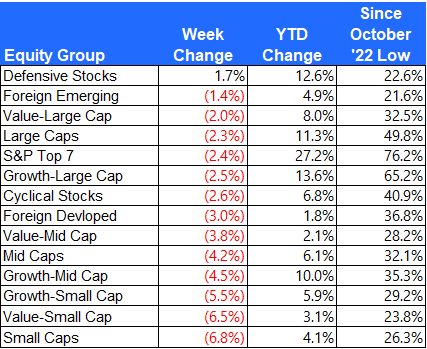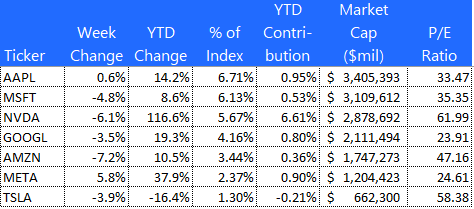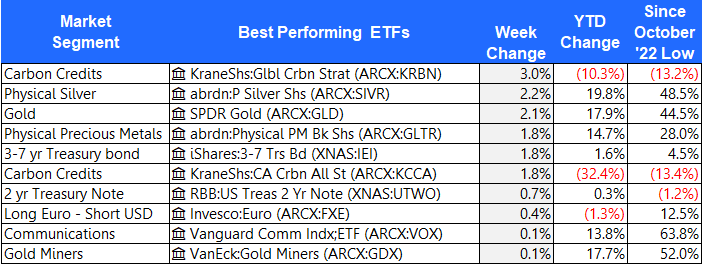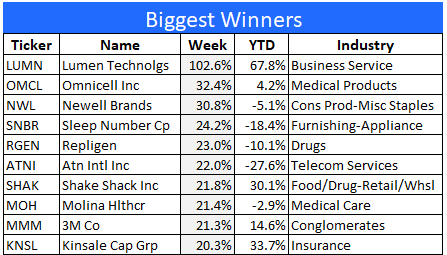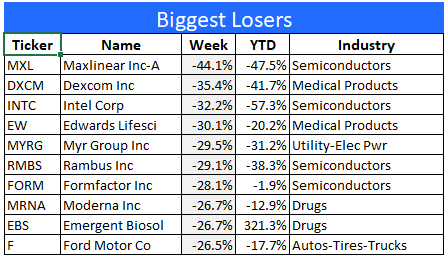In this brief market report, we look at the various asset classes, sectors, equity categories, exchange-traded funds (ETFs), and stocks that moved the market higher and the market segments that defied the trend by moving lower.
Identifying the pockets of strength and weakness allows us to see the direction of significant money flows and their origin.
The S&P 500 has made 38 new highs so far this year.
The S&P 500 notched its 38th record high on July 16, reaching 5667. Since then it's been a downhill slide with the market giving back 5.7% in the last three weeks. In a typical year, the market makes 14 new highs over the full year. Here's a look at the last 4 weeks.
A look at monthly returns.
This chart shows the monthly returns for the past year. August is off to a shaky start. Bear in mind that pullbacks of 5% or so are common during bull markets.
A look at the July selloff.
Here is a closer look at the July decline, using a drawdown chart. The maximum drawdown so far is 5.7% from the peak on July 16.
A look at the bull run since it began last October.
This chart highlights the 49.5% gain in the S&P 500 from the October 2022 low through Friday's close. We have dipped below the trendline and it looks like we may have further to fall before this pullback is over.
Major asset class performance.
Here is a look at the performance of the major asset classes, sorted by last week's returns. I also included the returns since the October 12, 2022 low for additional context.
The best performer last week was volatility, as measured by the VIX index. Nervous investors are loading up on S&P 500 put options. The worst performer was Blockchain, as Bitcoin gave back some of its recent gains. Small caps had a rough week, giving up more than 3% on Friday alone.
Equity sector performance
For this report I use the expanded sectors as published by Zacks. They use 16 sectors rather than the standard 11. This gives us added granularity as we survey the winners and losers.
Utility stocks had a good week, owing to falling rates and investor nervousness. The same can be said for Real Estate and Consumer Staples. Autos struggled as Ford and Tesla took a beating. Technology fell victim to the mass exodus from chip stocks.
Equity group performance
For the groups, I separate the stocks in the S&P 1500 Composite Index by shared characteristics like growth, value, size, cyclical, defensive, and domestic vs. foreign.
The best performing groups last week were the defensive stocks like Utilities and Consumer Staples. Small and Mid-caps got hammered, giving back a sizable chunk of their recent gains.
The S&P Top 7
Here is a look at the seven mega-cap stocks that have been leading the market over the past year. These seven stocks account for 62% of the total YTD gain in the S&P 500. That's down from 87% just a few months ago, providing evidence that participation in the bull market is broadening.
The S&P Top 7 dominance is fading
The 10 best performing ETFs from last week
Carbon Credits, Precious Metals. and Treasury Bonds led the pack last week.
The 10 worst performing ETFs from last week
Bitcoin-related ETFs had a dismal week. Japan took a beating, as did Regional Banks and Oil & Gas Equipment stocks.
The 10 best performing stocks from last week
Here are the 10 best performing stocks in the S&P 1500 last week. Lumen Technologies doubled last week. They made a deal to supply next-generation fiber optic cable to Corning [GLW].
The 10 worst performing stocks from last week
Here are the 10 worst performing stocks in the S&P 1500 last week.
Four of the Ten worst performers are semiconductor stocks, with Maxlinear dropping 44% on the week.
Final thoughts
Any way you slice it, it was an ugly week for the stock market. But it's way too soon to push the panic button. After all, we're only down 5.7% from the all-time high set on July 16th. These 5% pullbacks are quite common during bull markets. Corrections (declines of 10% or more) are less common, but they can do some good by taking some of the lofty valuations out of the market leaders.
I expect the market to continue to pull back for the next few weeks, perhaps reaching correction territory. Then, when the Fed begins to cut rates later this year, the market will likely have a strong finish. All in all, it looks like 2024 is on pace for a strong showing.

